Speaking our shared language—test your woodworking vocabulary against this TableLegs.com glossary of common and not-so-common woodcraft words.
Antiquing: To take a new piece of furniture, or furniture component, and make it appear to be much older than it actually is; often a wood finish is used to accomplish this.
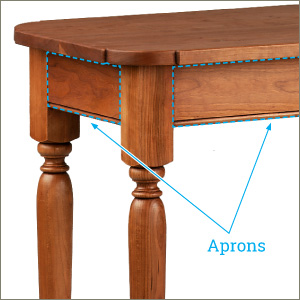
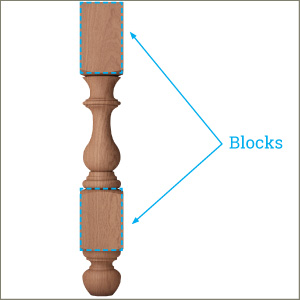
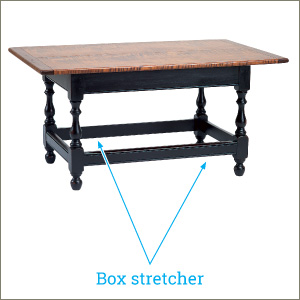
Apron: Also referred to as skirts, these connect the legs to each other under the table top, creating one cohesive piece of furniture.
Block: The square part of any leg that can be mortised to receive stretchers for additional support.
Box stretcher: Wood pieces that connect to the legs near the floor, giving the complete table more structural stability and visual weight. A box stretcher encompasses the perimeter of a table.
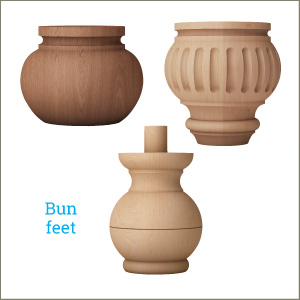
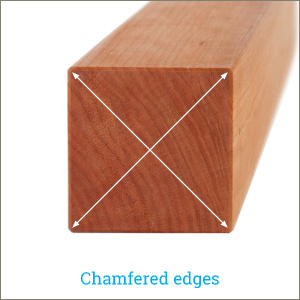
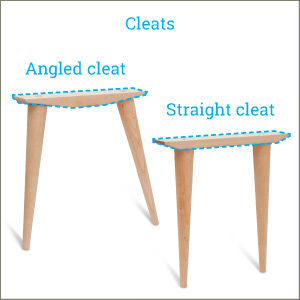
Bun foot; Smaller scaled furniture foot, often round, resembling a bun. Shop bun feet
Chamfer: A transitional beveled edge or corner, usually a cut pitched at a 45-degree angle. A pleasing feature on an edge.
Cleats (straight/angled/flattener): Straight/angled cleats are designed to securely attach legs or feet to tables, benches or other furniture. Flattener cleats are designed specifically to keep table tops flat, although straight/angled cleats do this, also . Legs attach to cleats using an industrial strength fastening system that requires no tools. Each cleat comes with wood screws to attach the cleat under the table top, as well as two special bolts for mounting the legs or feet. SEE CLEATS HERE
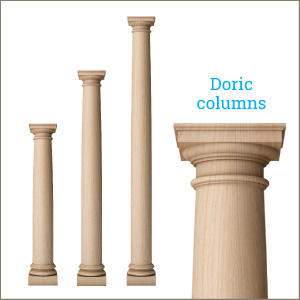

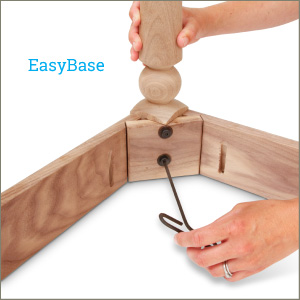
Doric: One of the simplest, earliest orders of classical Greek architecture. Doric columns are historically thick and heavy, often associated with strength and masculinity.
Dowel screw: A dowel screw has wood threads at both ends and secures a table leg or bun foot in place.
EasyBase: The innovative, brilliantly simple system by TableLegs.com of joining table legs with the base, and the base with the table top. With our EasyBase system, assemble heirloom quality furniture in minutes—even if you have no woodworking experience. Configure a custom table base
Earlywood: The wood grown within a tree in the early, warmer months of a temperate climate. This wood comprises the lighter colored wood between grain rings. Because of the seasonal warmth and rains, the wood grows more quickly in the early months, and therefore creates softer wood, until the winter months come, the trees fall dormant, and the latewood begins to grow.
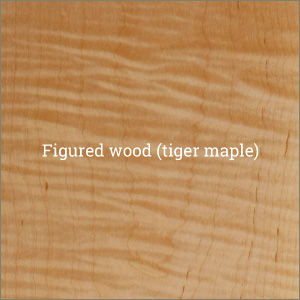
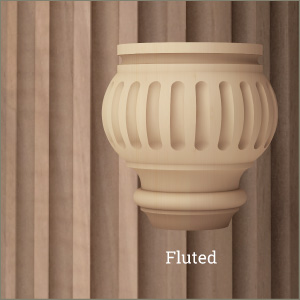
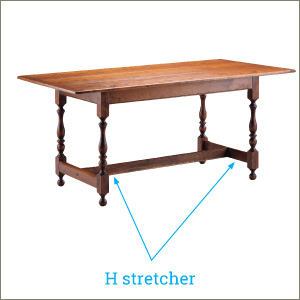
FAS: FAS stands for "First and Seconds" which is the highest grade of hardwood lumber making it the premier lumber for furniture and cabinet making.
Figure, Figured wood: Outstanding, unique character highlighted by reflecting light brilliantly due to density differences between the end grain and flat grain and changing grain directions within the wood. Burled and bird’s-eye are examples of figured wood; you might also get figuring around a knot. Figured wood is described as curly, swirly or quilted; cherry flame is another example.
Flutes, Fluted: Vertically oriented grooves incised into a turning that add rich detail and visual interest to a project. Spiral flutes are twisted grooves that travel up and down the workpiece. Shop fluted legs, feet and columns
Heartwood: The wood within a tree that does not include sapwood. Heartwood naturally darkens over time. Maple heartwood is different. Sapwood in maple is almost unnoticeably lighter than the wood itself, however there tends to be dark gray wood at the center of maple trees. The color of this wood in contrast with the color of maple wood, along with its common instability, makes utilizing the maple heartwood disagreeable.
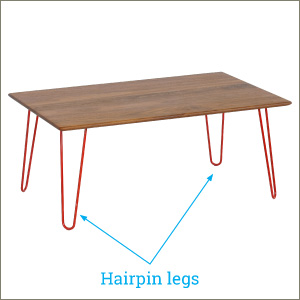
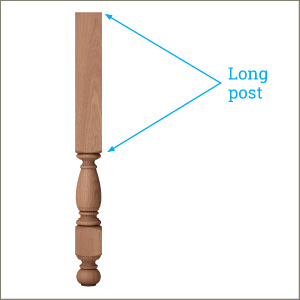
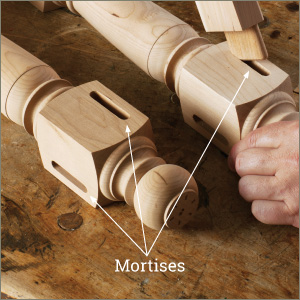
Hairpin legs: These are metal legs with minimalist design that look great on small dining tables, desks and sofa tables. Strong steel wire makes a lofty, light-looking leg in the Mid-Century Modern style. The legs attach quickly to any wood base or top. Shop hairpin legs
Long post: The elongated upper post of a column or leg that is square, allowing for mortise and tenon joinery for drawers or shelving. (See also “post.”)
Mortise: A milled slot within a piece of wood that allows a tenon to be fitted for a tight, strong joint.
Joinery: The means by which two or more pieces of wood are joined together.
Joint: Where two pieces of wood or furniture components meet each other.
Knot: Where a branch attempted to grow from the tree, was unsuccessful, died, and left dead wood in its place.
Laminated: This is the process by which table tops are put together, solid tops are glued edge to edge to the appropriate width and length. Turning squares are sometimes glued together before turning to shape and form.
Latewood: The wood grown within the late, colder months of a temperate climate. This wood comprises the grain rings or lines that are seen in wood. The wood is the same color as the earlywood, but because it was grown slowly, due to the cold temperatures, short days, and lack of available water, the latewood is much harder, denser, and compact, giving it a darker complexion.
Lathe: Woodworking machinery used to turn a square block of wood into a shaped leg or column.
PET: Precision end trimmed. This is used to describe lumber that has been trimmed square on the ends to be perfectly perpendicular with the sides. All our wood legs are turned from PET turning blanks.
Pilot hole: Predrilled holes precisely sized to accept a wood screw of a given size. Pilot holes are used to achieve maximum durability, and prevent the wood from splitting.
Post: Part of a column or leg that is square, allowing for straightforward joinery of aprons to legs.

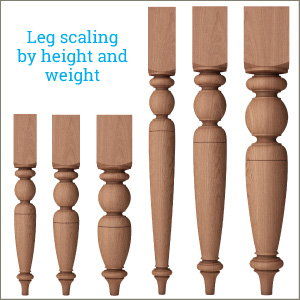

Pocket hole: Predrilled holes in the aprons sized to accept a wood screw to attach the table top. Always be sure that the wood screws are the right length, and will not drill through the table top!
S4S: Surfaced four sides. This is used to describe lumber that has been run through a planer, creating 4 smooth sides all running parallel. All our wood legs are turned from S4S turning blanks.
Scaled: The proportioning of associated elements to achieve balance and harmony in the relationship between two dimensions, or between multiple components of a single piece of finished furniture.
Spalted, Spalting: The stage of decay just prior to rot, causing black veins to form and travel though the wood, and causing the overall color of the wood to change into several other colors.
Sapwood: The wood directly behind the bark of the tree. It is, in most species, significantly lighter in color than the heartwood, creating a distinct contrast between the heartwood, which is no longer living, and the sapwood, which is constantly growing, expanding the size of the tree, and forming through maturity into heartwood which serves the purpose of supporting the weight of a growing tree.
Shaft: The turned smooth length of any leg or column, unimpeded by ornamentation.
Stretcher: An element that connects the lower portion of legs, giving the complete table more structural stability. Box stretchers encompass the perimeter of a table while an H stretcher connects the legs across the width of the table with a middle stretcher.
Stretcher block: The block toward the bottom of legs to which the stretchers are connected. SEE OUR ENTIRE LINE OF LEGS FOR STRETCHER BASES
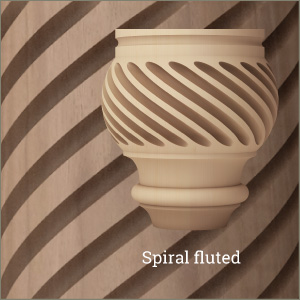
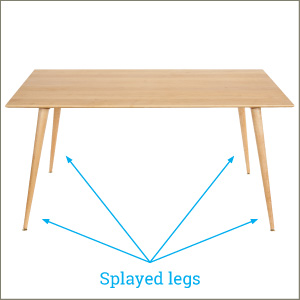

Spiral fluting: Carved grooves within the column or leg that wrap in a spiral around the shaft of the leg or column.
Splayed: When installed, splayed legs are wider at the toe than at the top of the leg, creating a wider leg stance at a compound angle. However, the legs remain within the overall footprint of the table top. This design is standard on our hairpin or trifold metal legs, and occurs when using an angled cleat under the table, as on our McCobb and Wegner Mid-Century Modern tables.
Tavern table: Traditionally, these solid-looking tables were built to stand up to rugged treatment in public-house settings. To provide durability and strength, this table style includes a stretcher just above the table foot, complementing the lovely rhythm between the flat of the upper leg post, the turned shaft and the turned foot of the leg.
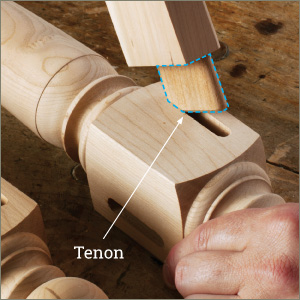
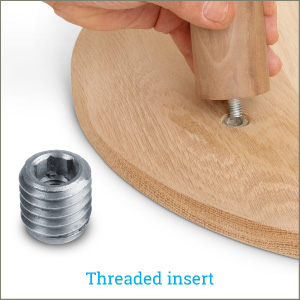
Tenon: A tongue on the end of a piece of wood that is shaped to fit snugly into a mortise, thus creating a tight, strong joint.
Threaded inserts: Threaded steel Inserts that are a rugged, attractive and versatile way to attach furniture feet and legs. They are an excellent option when superior strength is critical and you want the attachment hardware to be invisible—all you see is the clean lines of your furniture.
Patina: The gloss or sheen of wood after polishing and age.
Table base: The legs and aprons of a complete table.
Taper or tapered: Gradually diminishing thickness, diameter, or width in an elongated object (such as a leg or column).
Tapholes: The holes in sugar maple wood made to insert a “spicket” (or spigot) into the tree to collect sap for boiling down and converting to sweet maple syrup. Sometimes found in our Antique Spalted Maple.
Turning square: The wood block turned on a lathe to form a table leg.
